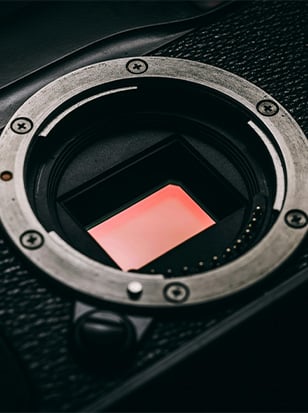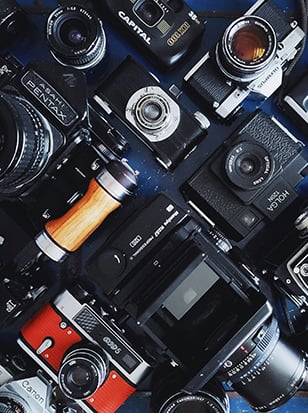
Let’s be honest - most of us are on the lookout for lenses that balance quality and cost. Going native, by which I mean using the manufacturer's lenses, is often the expensive route. But there are also third-party lenses.
This is a technically correct term, but it can have some unfair connotations - just because they’re not made by the camera brand doesn’t make them lesser lenses. In many cases, these lenses offer exceptional quality and highly impressive performance.
And Tamron lenses offer just that. They’re a joy to use, whatever camera system you’re using.

Tamron 11-20 f2.8 Canon RF - 11 mm 1/250 sec at f / 2.8 ISO 320 - Canon EOS R7 - Kanako Sato
A bit of history
Tamron is a Japanese lens manufacturer founded in the 1950s. They began by producing lens components and quickly became a respected name in the optics industry. Over the years, they’ve built on this and have been recognised for their high-quality lenses that offer professional performance, portability and a more affordable price tag, attracting all skill levels.
It’s all about accessibility for Tamron. Their goal is to democratise quality by creating lenses that deliver those pro-level results without the flagship cost associated with native lenses. And yet, this approach hasn’t come at the expense of innovation.
They contributed to the early advancements in compact zoom technology, all the way to today’s high-performance all-in-one zoom lenses. And, more recently, the leaps in autofocus with the introduction of VXD (Voice-coil eXtreme-torque Drive) linear motor technology that deliver impressive speed, precise and near-silent operation.
Tamron was also early to embrace the shift to mirrorless, launching a growing number of compact, full-frame lenses for Sony E-mount, Fujifilm X-mount, Nikon Z, and, most recently, Canon R cameras.

Tamron 50-400 Nikon Z - 400 mm 1/250 sec at f / 6.3 ISO 500 - NIKON Z 9 - Natsumi Handa
Materials and build quality
Something I love about Tamron lenses is the way they look. They’re sleek and attractive. Perhaps that shouldn’t be the main point here. Okay, we’ll come to that later.
Any professional photographer will tell you that they want kit that is portable and durable, and Tamron aims to strike that perfect balance. Most models now feature a blend of high-grade polycarbonate and metal components, which are intended to keep weight down without compromising structural integrity. So, lightweight, strong, and easy to carry around.

Tamron 28-75mm f2.8 Di III VXD G2 on a Sony A7 IV
Looking beyond the chassis, most Tamron lenses include fluorine coatings on the front element to repel water, oil and dirt, which is a must for any level of creator. Many are also weather-sealed, which should give you confidence if shooting conditions take a turn. Equally, select models feature internal zoom mechanisms that help maintain balance and reduce the risk of dust getting inside. It’s this level of detail and reassurance we look for when splashing out on a new lens.
Now, about the visuals. These lenses have a clean, minimalist, and professional finish, which is consistent across much of the lineup. This is an appealing and discreet aesthetic, and something we should talk about because it is important that you like the look of the equipment you buy. You need only glance at Apple, and you see why so many people want their products - they look cool. But unlike Apple, Tamron lenses don’t draw attention and still deliver where you need them to.

Tamron 17-50mm f4 on a Sony A7 IV
What makes Tamron unique?
There are several third-party brands out there, all of which compete head-to-head with the heavy hitters like Canon, Nikon, Fujifilm, and Sony. And it can be difficult to really differentiate between them if you’re not an enthusiast who reads into these things. What makes Tamron unique comes down to a few key points.
First is the focus on accessibility without compromise. As I mentioned, when building the lenses, they are able to bring down consumer costs by choosing specific materials that offer the same level of integrity and performance as more costly options. In doing so, they strike the balance between cost, quality and usability, where other brands simply chase affordability.
This extends to the second point, which is that their lenses are tailored to real-world use. Instead of just replicating existing lens formulas, Tamron offer “unconventional” focal lengths and zoom ranges that actually suit the way people shoot. For example, the 35-150mm f2-2.8 Di III VXD; a hybrid portrait-travel lens with a wide aperture. Or the 17-70mm f2.8 Di III-A VC RXD, which is great as a travel or day-to-day photography lens. Many of their lenses are also significantly lighter and more compact than their equivalents, which is a major plus.
Thirdly, Tamron also handles its research and development and manufacturing in-house instead of relying on outsourcing. This might not seem important, but it reflects their commitment to precise quality control and innovation tailored to us, the creators.

Tamron 28-300mm f4-7.1
What the industry thinks
Tamron have been making waves with their kit in recent years. They continue to bring us impressive kit that is being used by photographers, filmmakers, and creators of all levels. And this is demonstrated in part by being awarded at least one TIPA award every year for 12 years, and at least one EISA award for the past 19 years.
In 2025 they won two TIPA awards for the best superzoom lens with the 50-300mm f4.5-6.3 Di III VC VXD; and for the best macro lens with their 90mm f2.8 Di III Macro VXD Lens.
Their EISA awards were given to the 70-180mm f2.8 Di III VXD G2 for the best-buy telephoto zoom, and the 17-50mm f4 Di III VXD for the best-buy wide-angle zoom lens.
And, considering they have plans for up to six new* lenses in 2025 and up to 10 by the end of 2026 (according to their May financial report), I am sure there will be more awards on the way!
* They may be ticketed as “new”, but in many cases, these are existing lenses adapted for different mounts - like the 18-300mm f3.5-6.3 Di III-A1 VC VXD, which is being adapted for Nikon Z mount and Canon RF mount. All of this is to say that, this only reinforces Tamron’s commitment to accessibility and versatility, and I’m here for it.

Tamron 35-150mm f2-2.8 Di III VXD on Sony - Thomas Adorff
Wrapping things up
Native lenses will always have their place. And while other third-party options offer their unique take, Tamron have seemingly perfected their version of lens design and performance.
Unlike others (including first-party) who may favour image quality over portability or affordability over performance, Tamron lenses bring us lenses that consistently balance size, weight, quality, and affordability across the range.
What are our favourite lenses?
There are many, aren’t there? Yes. But that’s what our Best Tamron Lenses buying guide is for! In that guide, as a team, we went through all the top Tamron lenses and gave our favourite for specific use-cases.
About the Author
Leo White has been part of the Wex Photo Video team since 2018, taking on roles from the contact centre to the product setup team. Holding both a BA and an MA in photography, Leo brings a wealth of expertise he’s always ready to share.
Sign up for our newsletter today!
- Subscribe for exclusive discounts and special offers
- Receive our monthly content roundups
- Get the latest news and know-how from our experts













